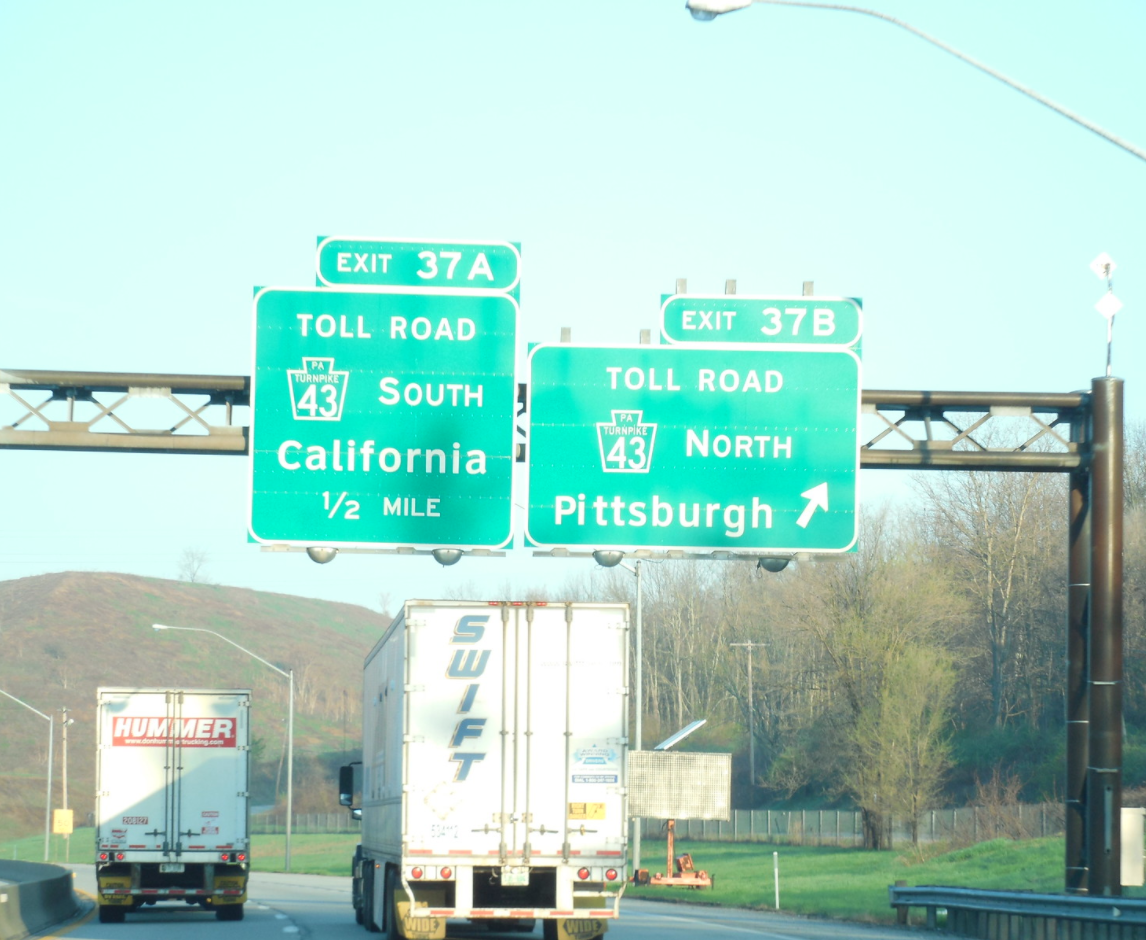Congestion Pricing Can Be Built For Equity
12:18 AM EDT on May 29, 2020
City leaders can bust myths about congestion pricing in the public consciousness — and implement road pricing that makes entire transportation networks more equitable, rather than less, a new study reveals.
The Eno Center for Transportation's report, Congestion Pricing in the United States [PDF], isn't just another study about whether toll lanes and high-occupancy vehicle exemptions help or hurt low-income people — because of course, they can do both those things, depending on how they're designed, built and managed. Instead, the report offers a comprehensive playbook for cities to create congestion pricing programs that center equity long before (and long after) a single quarter is tossed into a toll box.
And as city revenues plunge and transit empties out due to the COVID-19 pandemic, it may be a more important guide for cities to come back from crisis than ever before.
Here's our take on the principles every city should keep in mind when considering tolling drivers, along with a few comments from the study's authors on why most communities would be wise to try it — as long as they're prepared to do it right.
1. First, identify why, exactly, you're talking tolls
A diverse international group of advocates, researchers, civic leaders, elected officials and more agreed: good congestion pricing programs have to have a clear and stated goal beyond just padding the public coffers.
"They all said, 'If you don’t know why you’re doing this, don’t do it — and if you're doing it for general revenue, really don't do it,'" Robert Puentes, Eno Center's president and CEO, said in a webinar briefing on Thursday.
New York City's proposed congestion pricing scheme in the central business district of Manhattan, for instance, was created specifically to improve the city's deteriorating subway network — and because of that focus, all the program's revenues will go to the MTA. London, on the other hand, implemented its downtown toll primarily because it wanted to cut down on congestion that was hurting London's economy, so continuing engagement with downtown business owners was put front-and-center in the planning process. San Francisco is centering social and economic equity, so their proposed toll program will benefit low-income housing.
2. Spend the revenues right
Memo to the many, many communities that do this: taking the money your city gets from a toll road and using it to build more and better infrastructure for drivers doesn't really help solve the core problem of too many cars on the road. Like, at all.
That's the Eno Center recommends cities maintain a "rational nexus between revenue and spending" — which is planner-speak for "spend toll revenue on things that will get people out of their cars." Using tolls to improve bike and pedestrian infrastructure or providing affordable housing in walkable neighborhoods are great examples.
3. Make sure there are other ways to travel into the tolled area besides driving
Tolling the roads that low-income people rely on can cut off the vulnerable from crucial services and job opportunities — so it is crucial to provide them with another, better way to get where they need to go before you start collecting fees.
Stockholm, for instance, kicked off its congestion pricing pilot not by installing toll boxes, but by adding 16 new bus lanes specifically to give an affordable mobility alternative to those who couldn't afford to pay more to drive. Every congestion pricing program, Eno argues, should start with a strategic and meaningful expansion of other modes' protected networks, so no one is left stranded when driving gets more expensive.
4. Assess whom the toll really benefits — and make sure it's benefiting the most vulnerable
Building a congestion pricing program that generates benefit for some folks in your city is easy. But it's far better, the report authors argue, to toll in a way that actively lifts people out of poverty and provides them with better access to opportunity than they had before.
This has been the major sticking point among advocates who recognize the problems of car-dominated cities, but don't want to leave poor drivers behind. Congestion pricing can be a regressive fee, as the Eno center points out, but so is literally every other way we currently fund our road network — and toll revenues that are tied to progressive goals are a uniquely powerful tool to create broader mobility and equity.
"When I speak to a leader who authentically cares about equity, I say, 'Well, let’s do the analysis,'" said Martha Roskowski, principal at Further Strategies and one of the study authors. "Let’s look at who would be impacted by this congestion pricing, where they’re driving, where they live, where they work. Let’s move it from this broad 'it wouldn't be fair' conversation to 'who will this be fair for, and how can we make it more fair to those that need it most?'"
That analysis is unique to each city, but the report offered a persuasive example of how to do it right: "An analysis of congestion pricing in New York found that for every outer-borough commuter who would pay the tolls, 18 would benefit from upgrades to public transit." (Emphasis ours.) An earlier report showed that if you crunch the numbers by income levels instead of boroughs, the benefit for the working poor is even greater — with 38 benefiting for every one person who pays the toll, which funds both transit upgrades and subsidized transit fares for the lowest-income riders, according to the Community Service Society.
5. Build cross-sector partnerships – from the grass roots to the grass tops
How we change our transportation network impacts literally everyone, so it can't — and shouldn't — be done without the active buy-in of the whole community. That means not just the high-profile politicians, but also the street vendor who sells food on your newly tolled road, the dad who picks his kids up from daycare on the other side of your newly tolled highway, and the business owner who fears her customers won't come to shop because her block will be on the other side of the toll cordon. All of these people can become proponents of congestion pricing — but they must be engaged.
6. Communicate transparently and strategically
No one likes to suddenly pay for something we're otherwise conditioned to believe is free, like the roads we drive on. But of course, no road is truly free to use — and a whole lot of them are subsidized by unsustainable levels of public debt, not to mention the dollars of those who don't drive.
Rather than beating opponents over the head with white papers, though, Eno suggests public awareness campaigns that meet people where they are. For instance, an ad that tells residents what they'll gain by paying a new toll — Clean air! A safer, bigger, all-around better transit system! A thriving local economy! A more equitable city for everyone! — works a lot better than a dry informational announcement that says the government's about to take a few more dollars out of your pocket for driving on the same road that was "free" just last week.
Employing a dedicated media team to strategically parcel out the information of what a congestion program is, who it benefits, and why it matters, like London did, can also help build public support for less-than-intuitive programs like congestion pricing. Setting clear targets and reporting on them widely and transparently can help a lot, too.
7 . Limit toll exemptions
In perhaps the most-controversial element of the Eno report, the authors recommend against exempting too many citizens from paying the toll — at least in the long term.
A temporary toll waiver for low-income drivers or clean car owners can help the public accept congestion pricing in a short term, but over time, those well-intentioned discounts can defeat the core purpose of a congestion charge itself: curing congestion. Eno recommends, instead, implementing temporary waivers, and sunsetting them once toll revenues have helped build sufficient non-driving alternatives for the most vulnerable.
What do you think of Eno's report? Let us know in the comments.
Kea Wilson has more than a dozen years experience as a writer telling emotional, urgent and actionable stories that motivate average Americans to get involved in making their cities better places. She is also a novelist, cyclist, and affordable housing advocate. She previously worked at Strong Towns, and currently lives in St. Louis, MO. Kea can be reached at kea@streetsblog.org or on Twitter @streetsblogkea. Please reach out to her with tips and submissions.
Read More:
Stay in touch
Sign up for our free newsletter
More from Streetsblog USA
You Wouldn’t Like Monday’s Headlines When We’re Angry
Which state has the worst road rage? Consumer Affairs magazine looked at a variety of factors to come up with an answer.
When it Comes to Federal Infrastructure Grants, Size Does Matter
Cities and municipalities with larger budgets and staff are more likely to win competitive federal infrastructure grants, the Urban Institute has found.
The E-Commerce Explosion is Making Roads More Dangerous
And can advanced technology stop the bloodshed?
Are Friday’s Headlines the New Normal?
Transit ridership hasn't come all the way back from the pandemic, and they're going to need more federal help, along with other changes, says Governing magazine.
Friday Video: How to Make Places Safe For Non-Drivers After Dark
A top Paris pedestrian planner, a leading GIS professional, and Streetsblog's own Kea Wilson weigh in on the roots of America's nighttime road safety crisis, and the strategies that can help end it.





